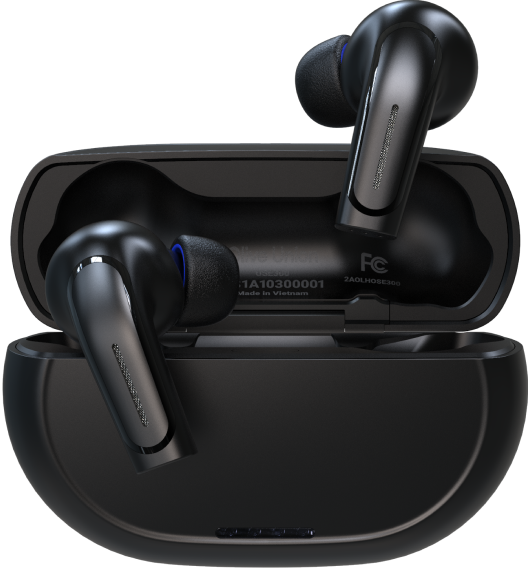
When people think of hearing loss, they often think of people no longer being able to hear quieter sounds, leading to turning up the volume on the television or their music. However, volume is only one factor that makes up the sounds that we hear. Another important aspect is the pitch of the sound; the higher the pitch, the closer the sound waves are to one another and the higher the sound.
High pitch hearing loss is one of the most common types of hearing loss. Someone with high-pitch hearing loss is unable to hear or has difficulty hearing or distinguishing high pitch sounds. This means that they cannot hear sounds in the frequency range of approximately 2,000 Hertz (Hz) and 8,000 Hz. This type of hearing loss can affect people of any age, but it is more common in older adults and people that are exposed regularly to loud noises.
Symptoms of High Pitch Hearing Loss
So how can you tell if you’re experiencing high pitch hearing loss? There are some obvious symptoms to watch out for; people with high pitch hearing loss often:
- Have trouble understanding the voices of adult females and children, but have an easier time understanding adult male voices.
- Have trouble distinguishing consonants in speech, such F, H, or S, which makes speech sound muffled; this may be exacerbated when talking on the telephone or watching TV.
- Difficulty hearing birds singing or chirping.
- Difficulty hearing devices that beep, such as the microwave or an alarm clock.
- Have trouble hearing treble sounds in music.
- Have a difficult time hearing conversations in large gatherings or noisy places with background noise.
Causes of High Pitch Hearing Loss
With normal hearing, sound waves enter the outer ear and cause the eardrum to vibrate. This vibration produces motion in the three bones of the middle ear; the motion is transmitted to the fluid-filled cochlea of the inner ear. Within the cochlea are hair cells that bend in response to this motion. The movement of these hair cells is transformed into electrical impulses which are sent along the auditory nerve to the brain to be processed as sound. Different hair cells are responsible for different pitches, or frequencies, of sound.
In people with high pitch hearing loss, some or all of the hair cells in the cochlea responsible for detecting high pitch sounds are damaged. As a result, when high pitch sounds enter the ear and cause the fluid in the cochlea to move, there are no functioning hair cells to receive that signal and transmit it to the auditory nerve. This type of hearing loss is known as sensorineural hearing loss. There are several reasons why the hair cells may become damaged:
- Aging: Aging doesn’t cause hearing loss; however, as you age your ears are exposed to sound longer and longer, thus increasing the likelihood that hair cells become damaged. The term for age-related hearing loss is presbycusis. This is a slow, gradual process and therefore most people do not notice the hearing loss until much later in life.
- Noise: Noise-induced hearing loss affects nearly 5.2 million children and adolescents and approximately 26 million adults in the United States. The damage can occur from an acute, one-time event, such as a gunshot or explosion, or from chronic exposure to any noise that is louder than 85 decibels. People that work in a noisy environment, such as mining, metalwork, construction, restaurant worker, or pilot, have a much higher risk of developing noise-induced hearing loss.
- Genetics: If you have a high incidence of high pitch hearing loss in your family, then you might have a genetic predisposition for developing hearing loss as well.
- Medications: Some medications are ototoxic, meaning they can damage your hearing. Common ototoxic drugs include aspirin in large doses and drugs used in chemotherapy.
- Diseases: Certain diseases can damage the inner ear and cause hearing loss, including Meniere’s disease, otitis media (ear infections), otosclerosis, autoimmune inner ear disease.
Treatment Options
The first step in treating high pitch hearing loss is to make an appointment with a licensed audiologist or other hearing health care professional and schedule a hearing test. The results of a hearing test, called an audiogram, will show in what pitches, or frequencies, your hearing is deficient. An audiogram that slopes to the right indicates difficult hearing in the 2,000 to 8,000 Hz range. This hearing loss may be characterized as mild, moderate, moderately severe, severe, or profound. Most high pitch hearing loss is treated with hearing aids.
The type of hearing aid that is most often recommended to people suffering from high pitch hearing loss is receiver-in-the-ear (RITE). This type of hearing aid sits in the ear canal, and has an open fit which allows low- and mid-pitch sounds to travel to your eardrum without interference or muffling. Smaller types of hearing aids, such as completely-in-the-canal, do not work well for high pitch hearing loss because, although they are smaller and less noticeable, they interfere with lower pitch sounds traveling to your eardrum naturally.
Modern hearing aids also have several features to help you hear better and improve quality of life, such as:
- Feedback cancellation
- Noise reduction
- Multiple programs for different environments that change automatically
- Automatic volume adjustment
- Bluetooth connectivity, so you can stream audio from smartphones, tablets, and TVs.
The information in this guide has been written using the following reliable sources:
https://www.umms.org/ummc/health-services/hearing-balance/patient-information/how-ear-works
https://www.cdc.gov/ncbddd/hearingloss/noise.html
https://www.asha.org/public/hearing/causes-of-hearing-loss-in-adults/
https://helpingmehear.com/hearing-aids-news/how-to-treat-high-frequency-hearing-loss/
https://www.healthyhearing.com/report/52448-Understanding-high-frequency-hearing-loss
 (708) 847-3208
(708) 847-3208











